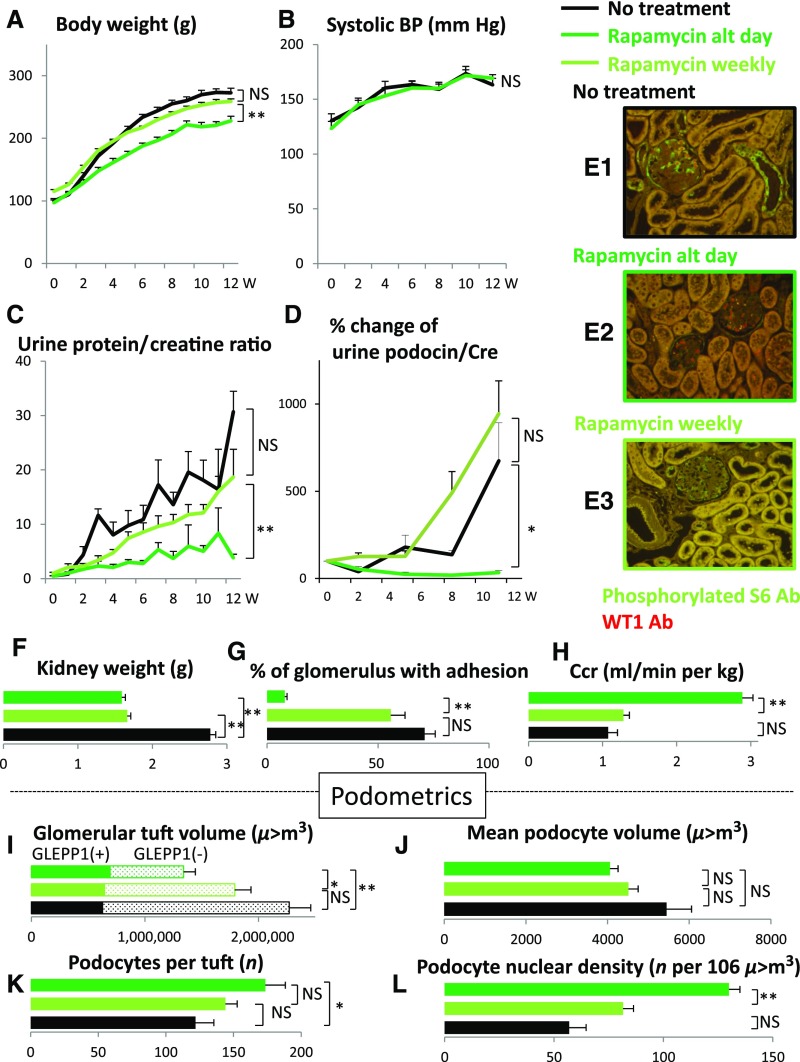Figure 3.
The mTORC1 inhibitor rapamycin prevents growth-induced glomerular failure in the AA-4E-BP1 model. Rapamycin (delivered at 10 mg/kg by IP injection on alternate days [dark green line] or at low dose once per week [light green line]) inhibited mTORC1 kinase activity as demonstrated by completely preventing phosphorylation of ribosomal S6 in glomeruli and tubules shown by green immunofluorescence (E1 versus E2). Podocyte nuclei are shown by red WT1 immunofluorescent staining. In contrast, lower-dose rapamycin (delivered as 10mg/kg by IP injection once per week) did not fully inhibit ribosomal S6 phosphorylation (E1 versus E3). Rapamycin treatment had the following protective effects: body weight gain was slowed (A); kidney weight gain was reduced (F); glomerular tuft volume was reduced (I); rate of podocyte detachment was reduced (D); reduction of podocyte number per glomerular tuft was prevented (K); reduction in podocyte density was prevented (L); there was no significant change in podocyte cell volume (J); urine protein/creatinine ratio was reduced (C); percentage of glomeruli with adhesions and amount of glomerulosclerosis were reduced (G); decreased creatinine clearance was prevented (H); and systolic BP increase with age was not prevented (B). Data shown as the mean±SEM. Glomerular tuft volume (μm3), mean podocyte volume (μm3), podocytes per tuft (n) and podocyte nuclear density (n per 106 μm3). *P<0.05, **P<0.01. Ab, antibody; alt, alternate; Ccr, creatinine clearance; Cre, urine creatinine; W, weeks.

